Deck vs. Patio: How to Pick One for Your Yard
By Axis Fuksman-Kumpa • January 8, 2024
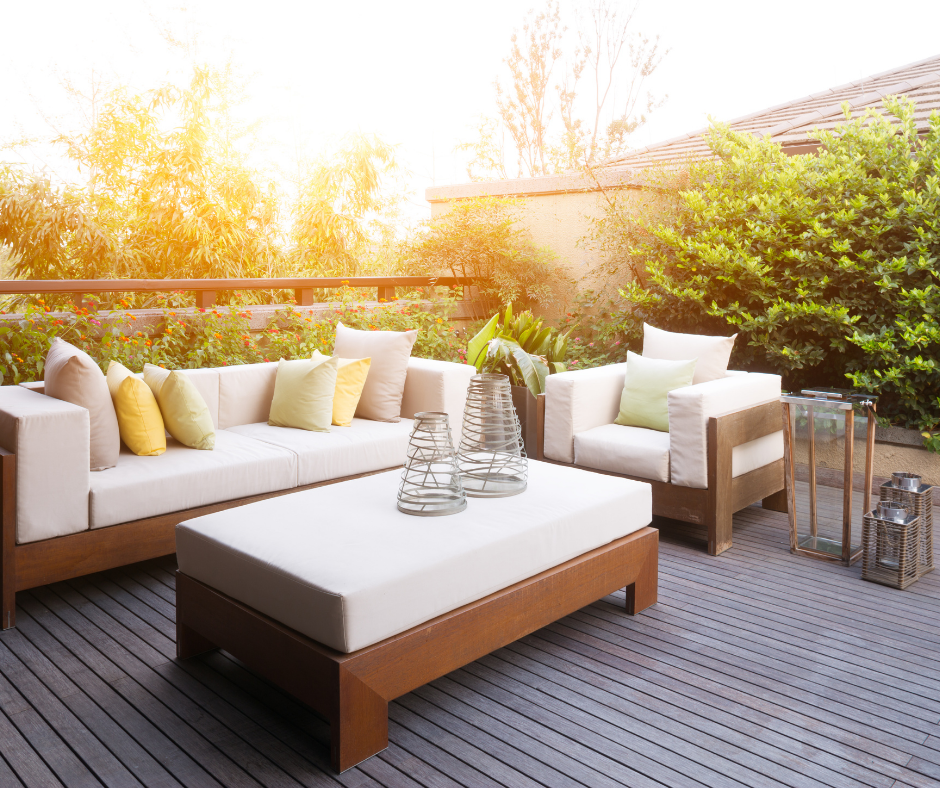
One of the most enticing goals for a backyard remodel is to expand your living space. By building an outdoor living space, you effectively add to your house square footage AND really bask in the outdoors. Imagine sitting in the sunshine on your patio sipping your morning coffee or a cozy evening gathered around the firepit on your deck with your friends—pretty magical, right?
Join our Newsletter
Sign up for our email list to receive exclusive promotions and landscape design inspiration.
The next step in creating livable outdoor space in your yard design is often to add a deck or a patio. But what’s the difference between decks and patios? Which one works best for your home? What do you need to know when designing a deck and patio? Which is best for resale value? If you have uneven ground? What will need routine maintenance? We’ve got the answers.
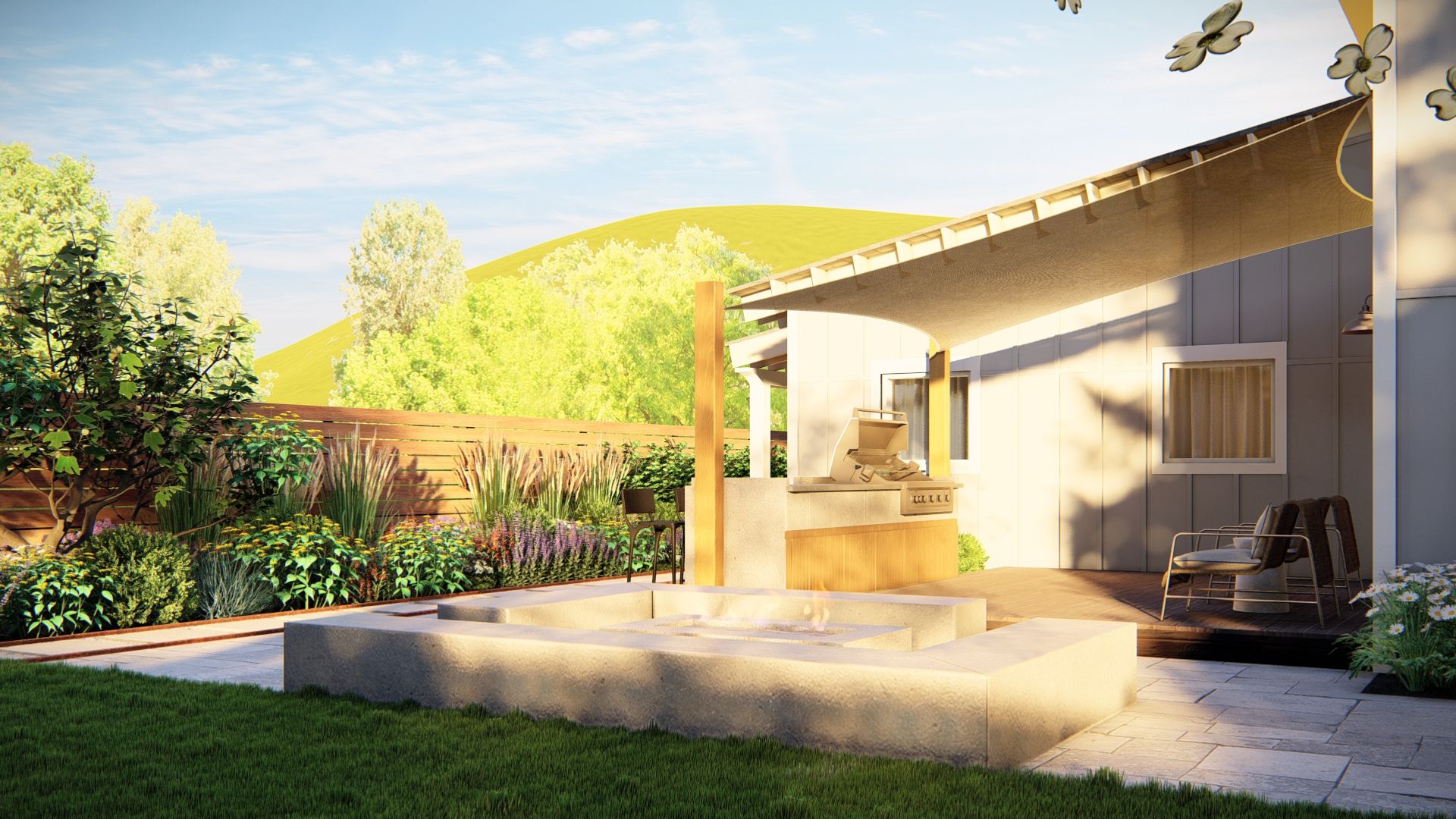
Key Differences Between a Deck and a Patio?
Materials & Location
First things first—let’s talk about the difference between a deck and patio based on what they are made from. A deck is built out of wood or composite boards and are attached to the structure of the house. It’s an elevated platform, so it can be built on uneven terrain or even raised to a second story deck.
Due to the elevation, decks typically have a safety railing around their perimeter. That extra height (whether it’s a foot off the ground or on the second story) can give you a boost to enjoy scenic views while lounging in your comfy deck chair.
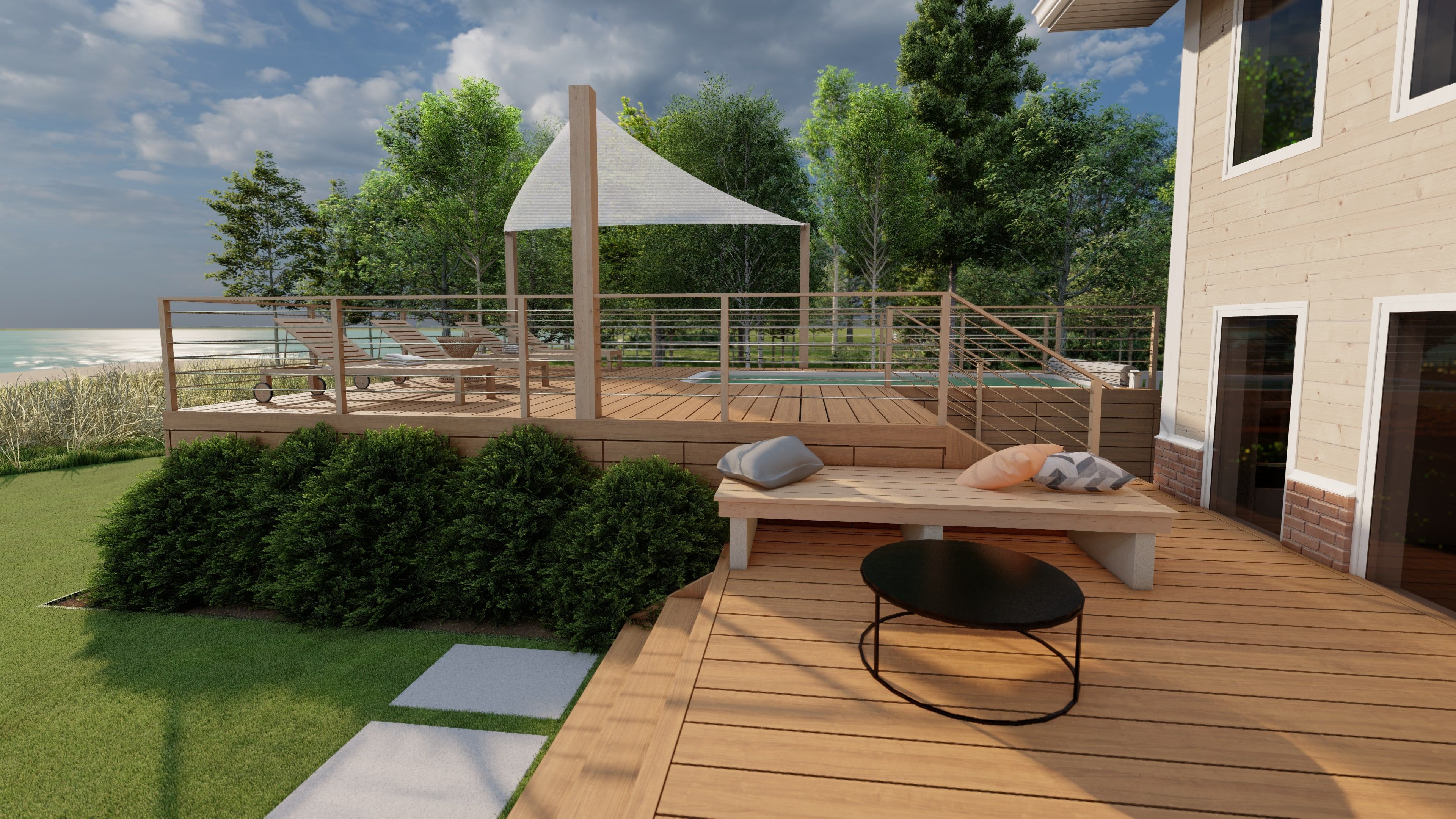
Now, what is a patio? Patios are ground level and made of brick, stone, concrete, or gravel. Since they are placed directly on the ground, the surface will need to be level before installation. Patios don’t need structural support, which means that they can be built abutting the house or freestanding and don’t need any type of railing.
A poured concrete patio is one of the most common patio types, but there’s a range of material options from large stone pavers, stamped concrete, concrete slabs to a modern pea gravel patio. Added bonus—all that stone is fire safe if you’re looking for the perfect fire pit location!
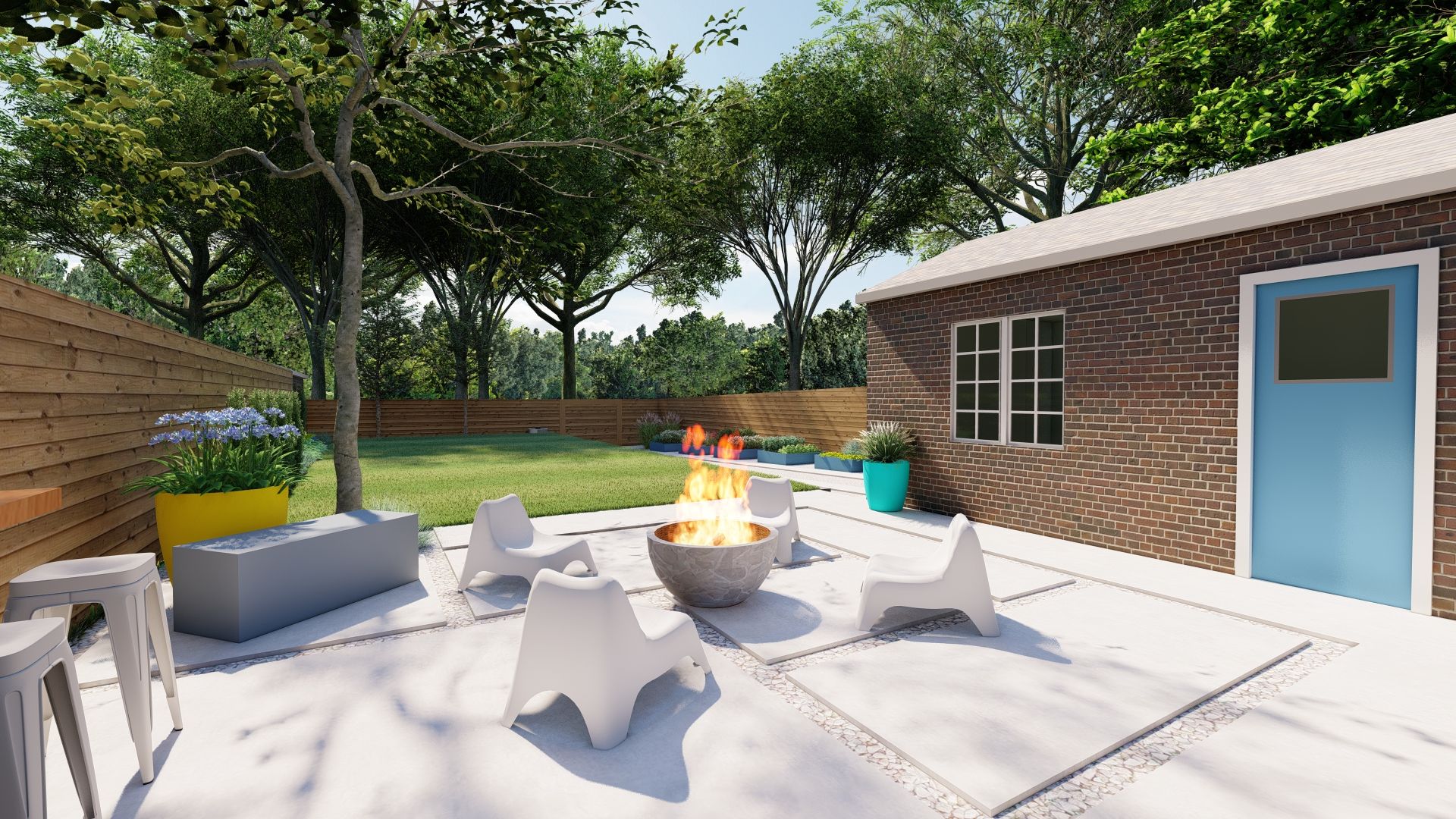
Patio vs. Deck Cost
When it comes to building, patios generally cost less than decks as decks typically have a much higher upfront cost than patios. There are several factors that contribute to that cost.
Stone and concrete for patios are generally cheaper than wood. Deck construction is time consuming carpentry and man hours that will run up a higher bill than laying stone or pouring concrete. Additionally, some areas require permits and charge permit fees for deck construction (we’ll talk more about that later).
Patios tend to be a more cost-effective outdoor living option, but you have to factor leveling the land if you’re building on uneven terrain. A patio cost estimator will help you predict how much money you’ll have to invest for your dream patio design.
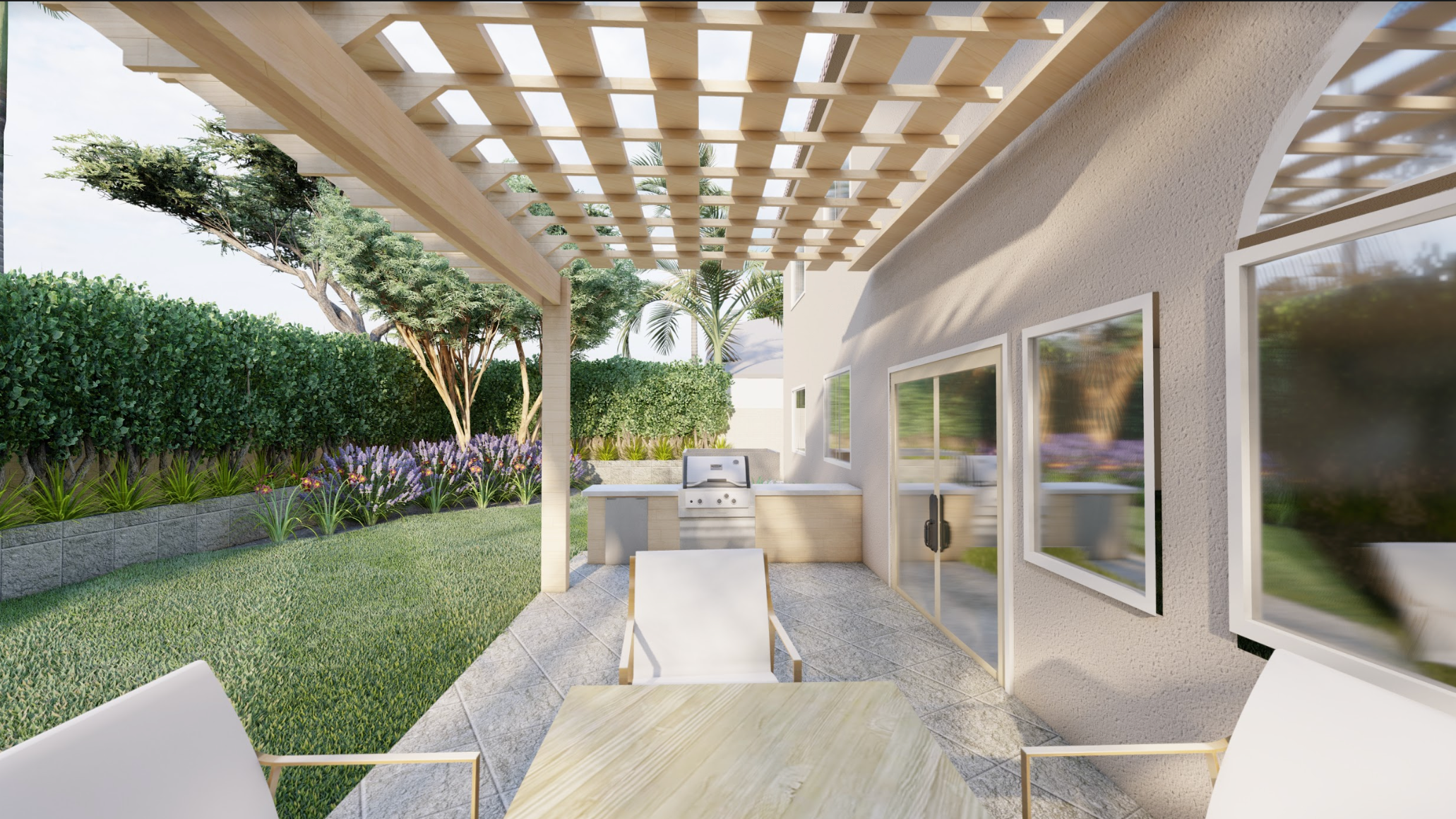
Continuing care and maintenance costs are higher for a wooden deck. Wood needs to be stained and resealed every few years depending on your location for proper maintenance and will only last 10-15 years before they likely need to be replaced.
Wood is also vulnerable to termites and other wood-boring insects, which means upkeep is especially important. An investment in composite decking materials will simplify maintenance, but be more expensive upfront.
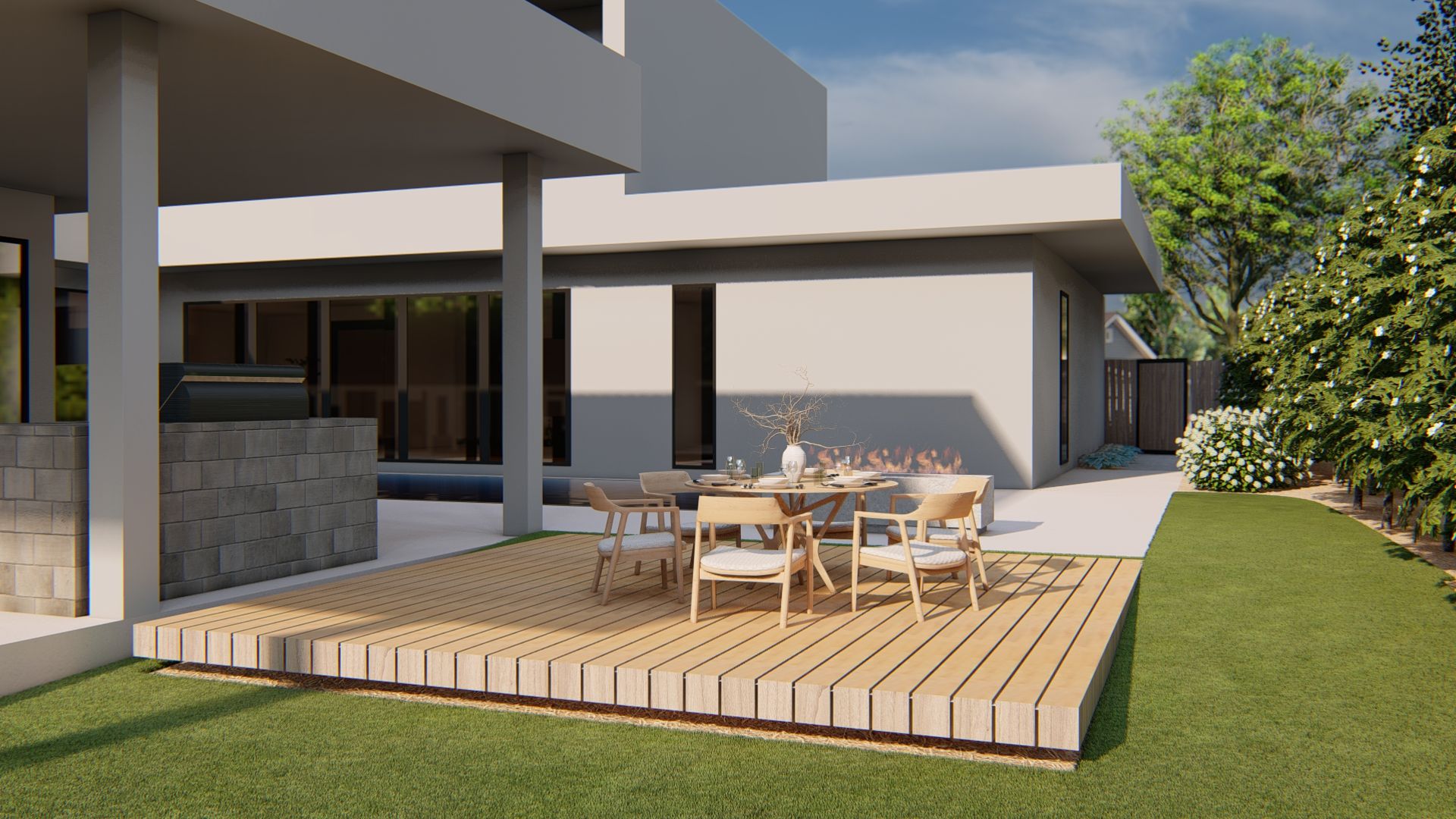
Patios, on the other hand, tend to be low maintenance. Stone patios and gravel patios are extremely durable and require little care. They can last for decades while needing minimal cleaning.
It’s also good to know that if you are considering a move in the future, a deck will provide a higher return on investment than a patio and can lead to a higher resale value. Home buyers love seeing a spacious wood or composite deck in a house listing!
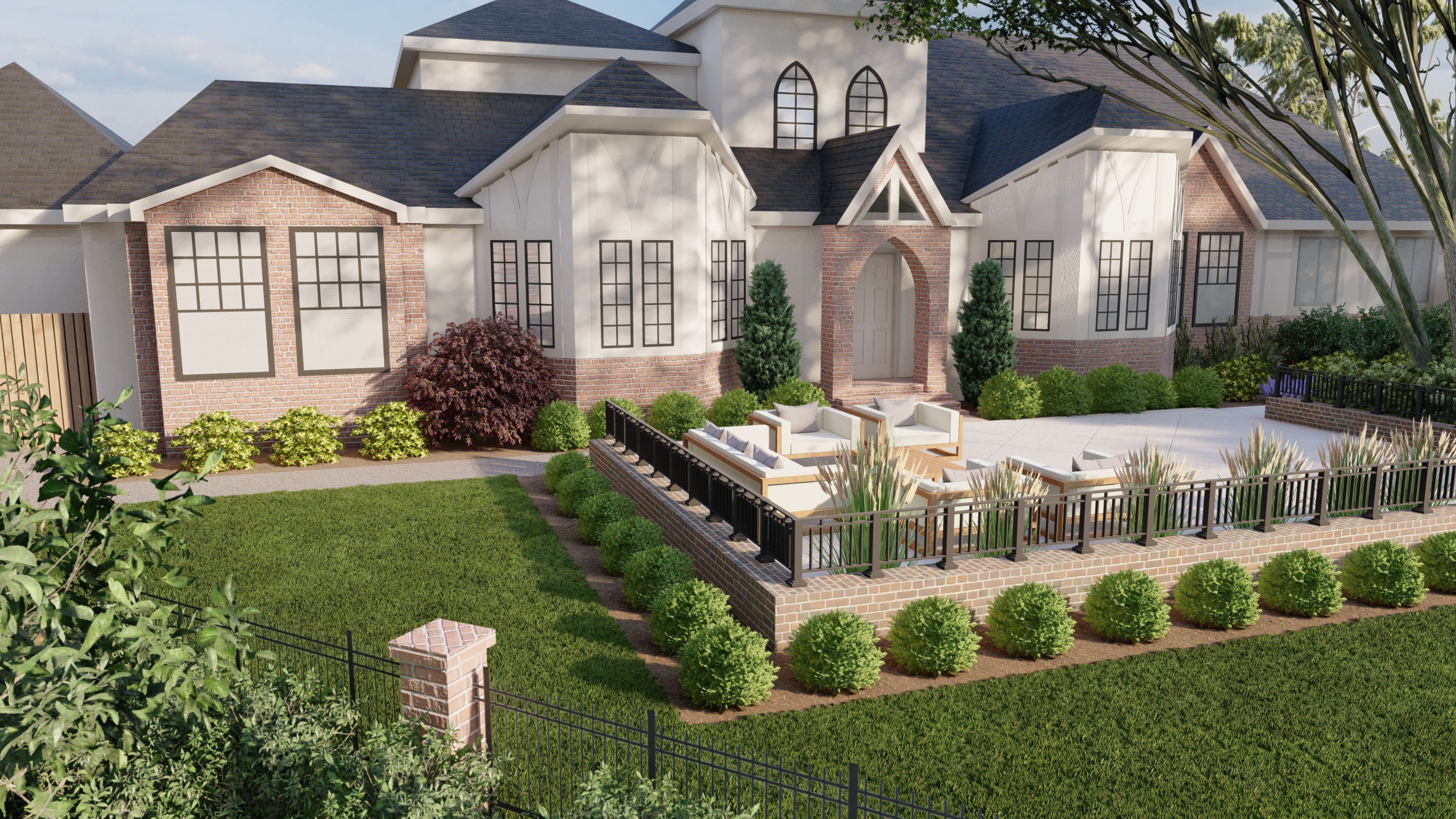
Restrictions & Permits
Make sure to check the local building laws in your area. Some regions require inspections and require permits for the construction of a deck because they are considered a part of the building that needs to be inspected just like the house itself. Safety becomes important especially in the case of a second story deck!
Inspections will tell you the weight restrictions that you’ll have to pay attention to for your new deck. Keep those restrictions in mind when you’re selecting deck furniture.
Patios rarely face any similar restrictions because they are built directly on the ground without any elevated constructed surfaces, which makes a patio a simpler choice if you want to avoid paperwork.
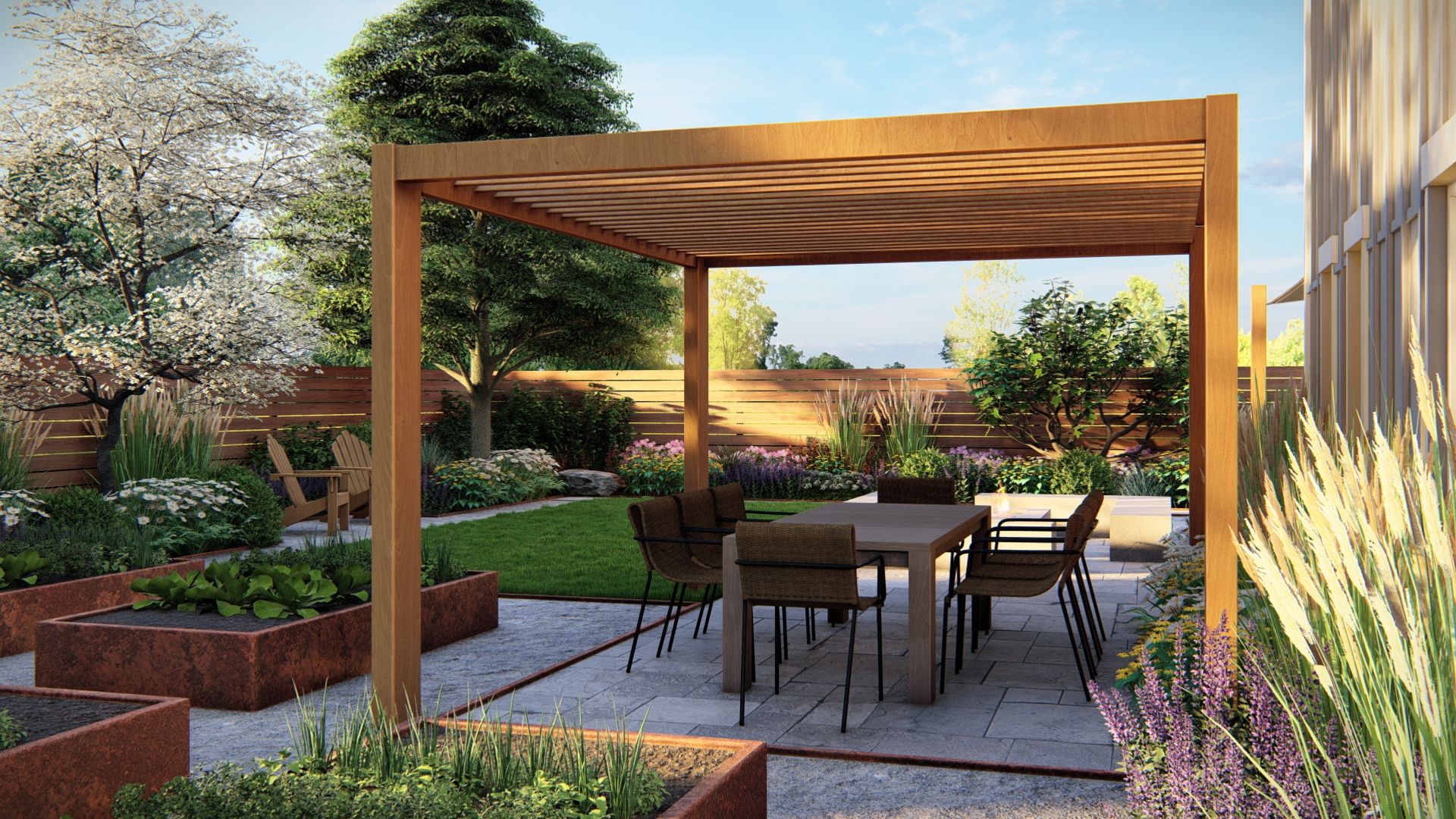
Join our Newsletter
Sign up for our email list to receive exclusive promotions and landscape design inspiration.
Sustainability & Environmental Impact
Decks are typically constructed out of wood or composite decking—a manufactured combination of natural wood and plastic. Wood decking is a renewable resource and is burnable or compostable at the end of its use (as long as it’s not chemically treated), but it has the shortest lifespan of any deck or patio material.
Investing in hardy and durable wood like cedar or redwood will help to increase the time before your deck needs to be replaced, but it will still be less long-lasting than a composite deck or a stone patio.
Composite decks, on the other hand, are much longer lasting and harder to degrade than natural wood. The production practices can be surprisingly eco-friendly (depending on the manufacturer), using both recycled wood and plastic.
However, the combined wood and plastic material of composite boards cannot be burned, composted, or recycled, meaning that they are destined for a landfill when your deck eventually needs to be dismantled. There are pros and cons to either material and the decision comes down to your own personal preferences and building needs.

How to Get Started
Alright, you’ve been won over by the concept of a gorgeous outdoor living space. How do you choose between a patio and a deck, select your materials, and actually get started building?
Identify Your Goals
Before you start throwing supplies in your cart at the hardware store, take a step back and think about what your goals are for your deck or patio. Consider some important questions:
How much do you want to invest upfront? If you’re sticking to a tight budget, a compact patio is the choice for you. If you’re investing for the long term, the splurge for a beautiful redwood deck could pay off when you sell your home.
- How much maintenance are you willing to do? If you don’t mind doing a little upkeep, you might appreciate giving your deck a scrub, stain, and seal every year or two. If you prefer to get all the work done at once and then kick back and relax, a patio is more your style.
- How long do you want it to last? A patio is going to be around for the long haul, but a deck typically lasts 10-15 years even with proper maintenance.
- What terrain are you building on? If you’re building on a steep hill, the headache of leveling the land might make a deck an easy pick. If you already have a flat canvas to work on, go wild with the hardscape ideas for a patio that will be a cinch to install.
- Do you want to do a DIY install? Decks require a complex and extensive build process that we don’t recommend for an amateur—plus, any mistakes can make a deck unsafe, so stick to expert installation. Patios (particularly those installed on already level ground) can be a self-installed project if you’re willing to do some heavy lifting!
- How do you plan to use the space? If you want a space to recline with a view, an elevated deck is your spot to lounge. On the other hand, patios provide a durable surface for a high-traffic area or for showpieces like a cozy fire pit or lush patio water feature.
- Which look do you like better? The aesthetics of a patio vs deck will all come down to personal preference, and that matters a lot! You’re going to be living and lounging in this space for years to come, so use this opportunity to build a beautiful backyard that you will truly love.
Think about all these questions and rank them by how important they are to you. Is budget your top priority? Are you counting on this patio still being around when you retire? Are you finally splurging on the Pinterest-perfect deck you’ve been saving up for? The final decision all comes down to which factors matter the most to you.
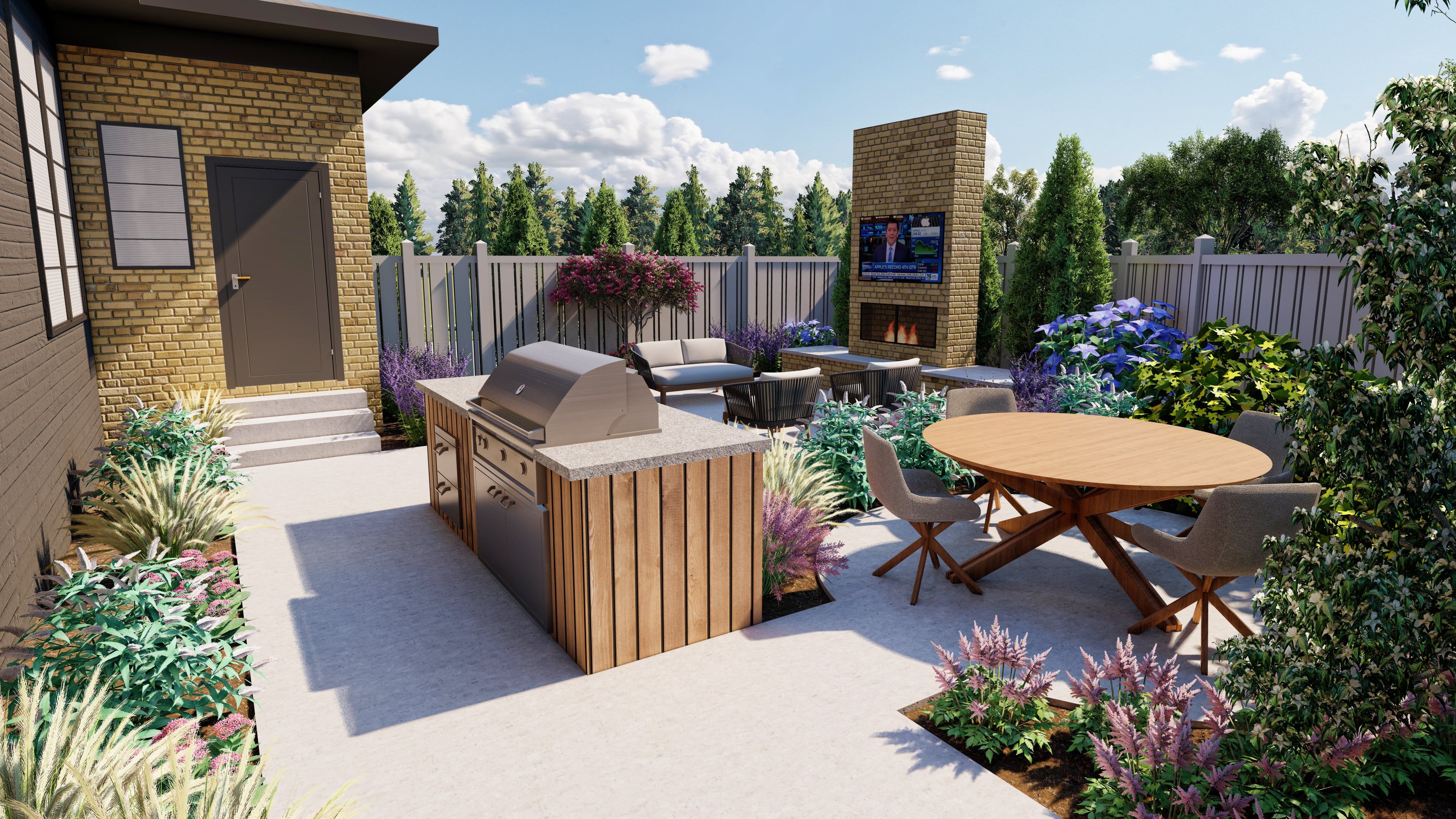
Plan it Out
Once you’ve decided that a deck is the perfect choice for your backyard design or your heart is set on a show stopping front yard patio, it’s time to get to planning and building. Here’s how to get the process started so you can get to enjoying your new deck or patio.
- Plan your layout. Consider the space you have to work with, the area you want to build on, how to make the space functional for your needs, and how to incorporate your patio or deck into your other backyard landscaping ideas.
- Select your materials. Whether you’re opting for durability and simple install after obsessing over dozens of pea gravel patio ideas or you’re going for the clean look and easy care of a composite deck, choose the material that’s right for your project. This is the time to check prices and shop around for what fits your budget.
- Install your new patio/deck! This is where it all comes to life. Roll up your sleeves if you’re laying your own patio pavers, or call your local patio landscaping expert or deck building whiz to make your plans into a reality.
If you feel like you could use a helping hand in this process, we’ve got your back! Our expert landscapers at Tilly love to incorporate decks and patios into your backyard remodel plans. Whether you’re considering a front patio, brick pavers, a real wood deck, or multi level patio and deck – we’re here to help create your dream deck or patio landscape design.
Get in touch and let us guide you from the design phase all the way through new install support services!








Read more about: Landscape Design Tips, Gardening Tips